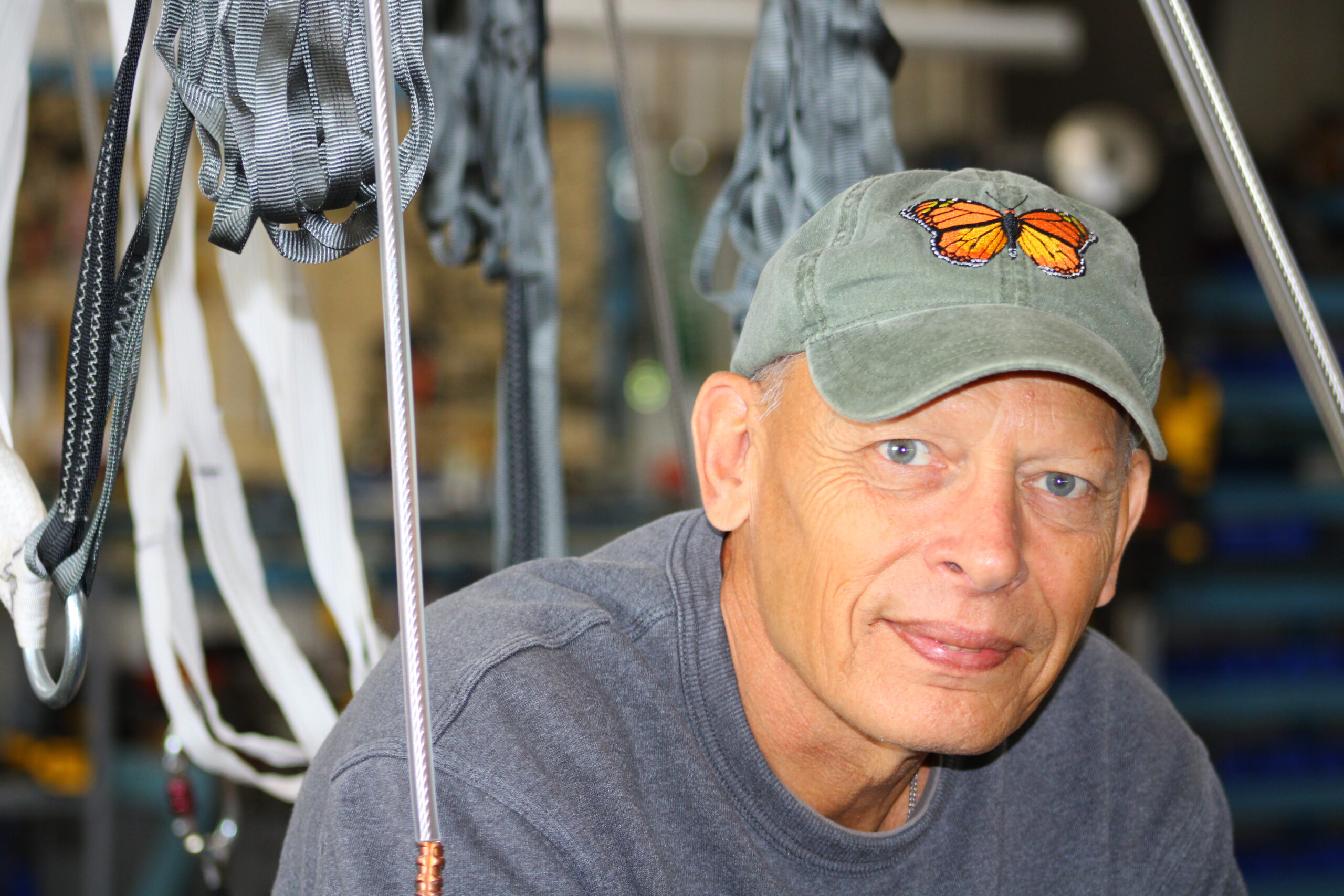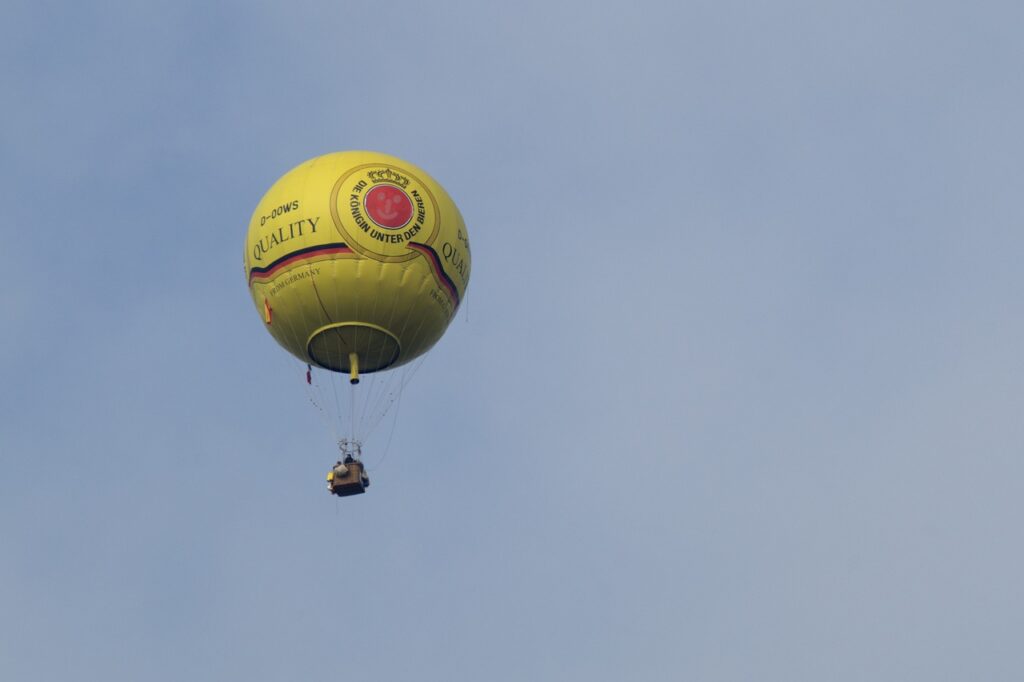
An international team of balloonists plans to launch into history from Presque Isle.
From Scotland’s Isle of Skye, an adventure sponsored by a whisky distillery will unite two British adventurers with an American record-holder as they attempt the first trans-Atlantic flight in an open-basket hydrogen balloon next month.
Pilots Sir David Hempleman-Adams, 66, of England and Bert Pedelt, 62, of Pennsylvania, along with Swiss scientist and explorer Frederik Paulsen, 72, plan to fly to Europe sometime in September. The team chose Presque Isle partly because of its northern location and also to honor the Double Eagle II, the first successful trans-Atlantic hot-air balloon flight, which launched from the city in 1978.
“I’ve been involved in ballooning as long as I can remember,” said Padelt, who is in Presque Isle preparing for the launch. “I’ve always imagined being attached to something that was blown by the wind, like blowing a dandelion and watching the seeds drift on the air.”

It’s an ambitious undertaking with a threefold purpose. The team wants to be the first — and oldest — team to cross the Atlantic in an open-basket hydrogen-powered balloon. The men will also sample air at different altitudes to look for new microbes that could benefit medicine, agriculture and other sciences.
What’s more, in a parallel to St. John Valley’s efforts to preserve the native Acadian French by teaching children, the team will donate all money raised from their venture to a Gaelic-language school on the Isle of Skye, according to the project’s website.
The Torabhaig Atlantic Explorer already has many hands involved from both sides of the Atlantic. Its sponsor is the Torabhaig (pronounced TOR-a-vague) Distillery on Skye, which Paulsen’s daughter owns, Padelt said. Local helpers include Presque Isle photographer Paul Cyr, in whose shop some of the team is working, and the Aroostook County Composite Squadron of Civil Air Patrol.
Padelt eagerly followed the Double Eagle II journey, and never lost the desire to be part of a similar journey, he said.
After working for a balloon manufacturer in Virginia, he moved to Bally, Pennsylvania, and launched his own business, Best Aviation Services. He has handcrafted special balloons and baskets for numerous pilots, including adventurer Steve Fossett, he said.

Fossett was the first to complete a solo flight around the world in a hot-air balloon, according to This Day in History.
Padelt also followed Hempleman-Adams’ balloon flights, including one to the North Pole and another in a very small balloon across the Atlantic. The two became great friends, and then the English pilot suggested the two of them make a trans-Atlantic flight, Padelt said. Planning started in February.
“The key to the success of a project like this is you can’t do it on your own. You have to have a team of people, which we do, and it’s growing,” he said. “This flight would not be possible without them.”
Padelt’s wife, Joanie, is his No. 1 team member, he said. She and other friends and family of the crew will be in Presque Isle for the launch, and on the ground in Europe wherever they land, he said.
Gas balloons are powered either by helium or hydrogen, he said. Most balloonists choose hydrogen instead of the rarer and more expensive helium.
While some may wonder if flammable hydrogen is dangerous, Padelt said the balloon construction makes it safe. Hydrogen balloon fabric is heavier and laminated to keep the gas from leaking. The materials also create a conductive path to drain off static, he said.
Local Civil Air Patrol cadets filled sandbags for the flight Monday evening, according to squadron member Kelly Mierzwa. Capt. Sam Canders of Civil Air Patrol-U.S. Air Force, a Washburn native and Torabhaig team member, invited them to help, Mierzwa said.
The balloon will carry 160 sandbags weighing 30 pounds each for ballast of 4,800 pounds, Padelt said. The basket and equipment will weigh 1,600 pounds.
Hydrogen balloons differ from their hot-air counterparts, Padelt said. Whereas a hot-air balloon is filled with air heated by a propane burner, the hydrogen version is filled with the gas, then sealed. Flight is controlled by the heat of the sun and removal of ballast, or sandbags.
The flight is expected to take about five days, he said. During the day, the sun will heat the gas, keeping the balloon aloft. Each night, when the gas cools, the team will drop 10 percent of the weight, about 17 sandbags or 510 pounds. With a lighter load, the balloon will rise. The next day, the sun will make it float higher, with its decreased weight. And so the flight will continue. When the ballast is gone, the flight is over, he said.
During the flight, the three men will be in constant contact with team members, including meteorologists who will help direct their path. The team can’t specify an expected launch date yet, but its meteorologists will advise the most favorable time, Padelt said.
The balloon basket is rigged with straps, ballast bags and ropes. Inside, the varnished wooden floor and equipment stands show Padelt’s craftsmanship. The basket is emblazoned with Torabhaig and other logos. There’s also a monarch butterfly, like the one on Padelt’s cap.
It’s a nice symbol, because the butterflies fly across oceans during their yearly life cycle, he said.
Though it’s all exciting, Padelt focuses on one step at a time. After all, this is one of his lifelong dreams.
“For years I’ve closed my eyes and imagined what it would be like to fly across Newfoundland. That will be the emotional part for me,” he said. “I’ve been waiting for this. It’s taken 50 years.”







